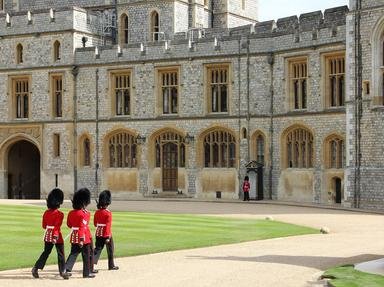Quiz Answer Key and Fun Facts
1. Who was this prince who fled to Skye
Rowed by a faithful buddy?
For the island's Fauna he'd no eye
But its Flora was his study!
Who was this bonny lad?
2. Once in a long bygone age,
Britain the world's emporia,
Who was the consort, wise and sage
Who counselled Queen Victoria?
3. "Just keep watch," the housewife said,
"Back in two short shakes!"
But other thoughts possessed his head-
So which king burnt the cakes?
4. Which future king from Wales came
Richard of York to pester
And bury him and his evil fame
'Neath a car park down in Leicester?
5. "I'll give my kingdom for a horse"
Was Richard of York's solace
But whose bargain was rather worse-
"My kingdom for a Wallis"?
Which king gave up the British throne for love of an American divorcee?
6. Katherine was number one
And also number five;
But, when Henry VIII's life was done,
Which Kate was left alive?
7. This king sought to make Normans fly
With many a trusty Saxon yeoman,
But an arrow pierced his eye
From a nasty Norman bowman.
Which king was defeated by William the Conqueror in 1066?
8. When this lady came upon the scene
All Protestants were wary.
This rather over-zealous queen
Was known as "Bloody Mary".
Who was she?
9. 1415 was the year
That this battle once was fought,
And English archers then struck fear
Into French hearts at Agincourt.
Which English king defeated the French at the Battle of Agincourt?
10. This king thought that he was strong
And that the sea would do his will.
But he found that he was wrong
When the waves rolled shoreward still!
Which king was convinced by the flattery of his subjects that that he could cause the tide to stop in its shoreward progress?
Source: Author
balaton
This quiz was reviewed by FunTrivia editor
bloomsby before going online.
Any errors found in FunTrivia content are routinely corrected through our feedback system.

